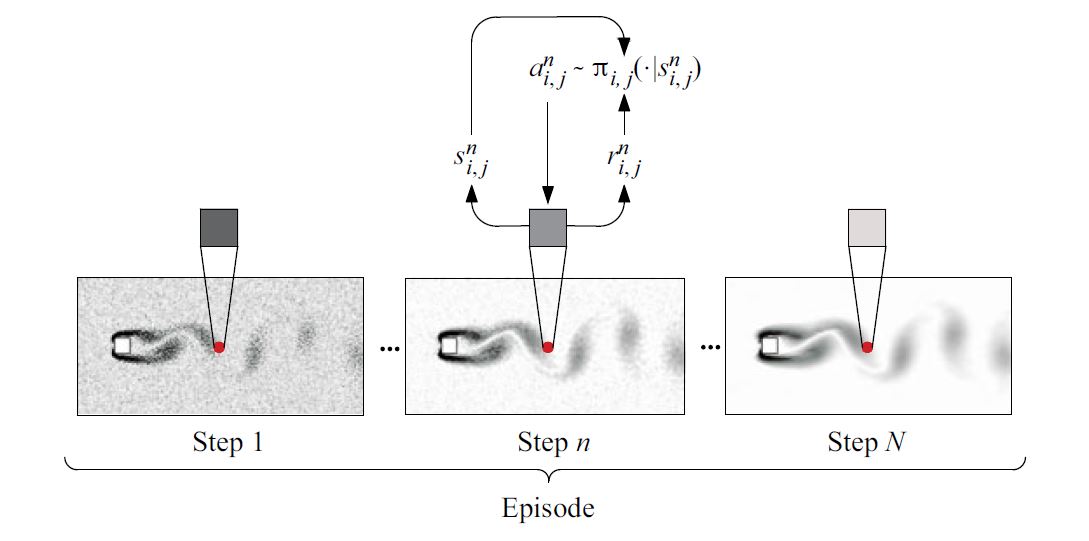- 작성일
- 2023.07.05
- 수정일
- 2023.12.11
- 작성자
- 임희창
- 조회수
- 297
PHYSICS-CONSTRAINED DEEP REINFORCEMENT LEARNING FOR FLOW FIELD DENOISING
Overview
A multi-agent deep reinforcement learning (DRL)-based model is presented in this study to reconstruct flow fields from noisy data. A combination of the reinforcement learning with pixel-wise rewards (PixelRL) method and physical constraints represented by the momentum equation and pressure Poisson equation as well as the boundary conditions is utilised to build a physics-guided deep reinforcement learning (PCDRL) model that can be trained without the target training data. In the PCDRL model, each agent corresponds to a point in the flow fields, and it learns the optimum strategy of choosing pre-defined actions.

Dependencies
Python: 3.6-3.8
Pytorch: 1.4.0 (cuDNN=7.6, CUDA=10.1 for torch)
Numpy: <1.19
Data preparation
1.Implement Add_noise.py to obtain the noisy DNS data with three levels of noise (1/SNR=0.01, 0.1, 1.0) using the dns-bluff_uv.npy data.
2.According to a certain length of time, pack the noisy DNS data to get random-noisy data by using Random.py.
Training
Use the random-noisy data in various levels of noise and PCDRL_Denoising_bluffbody_train.py to train PCDRL model.
Prediction
After finishing the training of PCDRL model, use PCDRL_Denoising_bluffbody_predict.py to generate the reconstruction of the random-noisy data in various levels of noise.
BibTex citation:
@article{yousif_zhang_yu_yang_zhou_lim_2023,
title={Physics-constrained deep reinforcement learning for flow field denoising},
volume={973}, DOI={10.1017/jfm.2023.775},
journal={Journal of Fluid Mechanics},
publisher={Cambridge University Press},
author={Yousif, Mustafa Z. and Zhang, Meng and Yu, Linqi and Yang, Yifan and Zhou, Haifeng and Lim, HeeChang},
year={2023},
pages={A12}
}